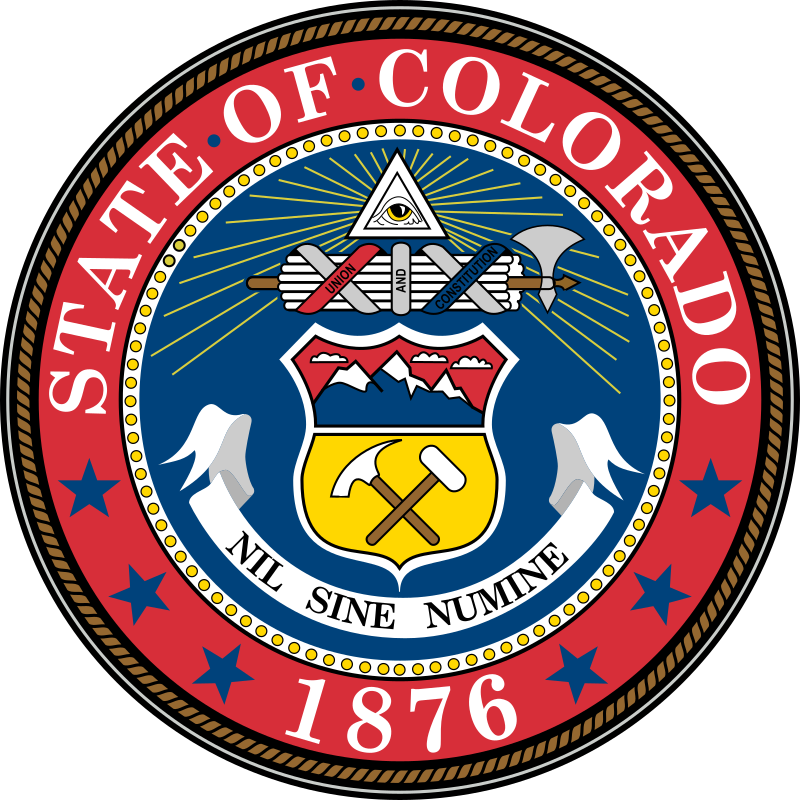
FROM WIKIPEDIA COMMONS
Colorado (/ˌkɒləˈrædoʊ, -ˈrɑːdoʊ/ (listen), other variants) is a state in the Mountain West subregion of the Western United States. It encompasses most of the Southern Rocky Mountains as well as the northeastern portion of the Colorado Plateau and the western edge of the Great Plains. Colorado is the eighth most extensive and 21st most populous U.S. state. The 2020 United States Census enumerated the population of Colorado at 5,773,714, an increase of 14.80% since the 2010 United States Census.
The region has been inhabited by Native Americans for more than 13,000 years, with the Lindenmeier Site containing artifacts dating from approximately 9200 BCE to 1000 BCE; the eastern edge of the Rocky Mountains was a major migration route for early peoples who spread throughout the Americas. The word “Colorado” comes from the Spanish word for “colored red.” The Territory of Colorado was organized on February 28, 1861, and on August 1, 1876, U.S. President Ulysses S. Grant signed Proclamation 230 admitting Colorado to the Union as the 38th state. Colorado is nicknamed the “Centennial State” because it became a state one century after the signing of the United States Declaration of Independence.
Colorado is bordered by Wyoming to the north, Nebraska to the northeast, Kansas to the east, Oklahoma to the southeast, New Mexico to the south, Utah to the west, and touches Arizona to the southwest at the Four Corners. Colorado is noted for its vivid landscape of mountains, forests, high plains, mesas, canyons, plateaus, rivers, and desert lands. Colorado is one of the Mountain States and is a part of the western and southwestern United States.
Denver is the capital and most populous city in Colorado. Residents of the state are known as Coloradans, although the antiquated “Coloradoan” is occasionally used.[12][13] Colorado is a comparatively wealthy state, ranking eighth in household income in 2016, and 11th in per capita income in 2010. It also ranks highly in the nation’s standard of living index. Major parts of the economy include government and defense, mining, agriculture, tourism, and increasingly other kinds of manufacturing. With increasing temperatures and decreasing water availability, Colorado’s agriculture, forestry and tourism economies are expected to be heavily affected by climate change.
AUGUST 1 HISTORICAL EVENTS
This observance, traditionally observed on August 1, marked the beginning of the harvest, and especially celebrated the first wheat crop, or that of corn. It derives from the ancient English festival the Gule of August, a pagan dedication of the first fruits that the early English church later converted to Christian usage. On Lammas Day, loaves of bread were baked from the first-ripened grain and brought to the churches to be consecrated. The word “lammas” comes from the Old English hlaf, “loaf,” and maesse, “mass” or “feast.” Through the centuries, “loaf-mass” became corrupted in spelling and pronunciation to Lammas. To the Celts, this was Lughnasaid, the feast of the wedding of the Sun god and the Earth goddess, and also a harvest festival. In Ireland, baskets of blueberries are still offered to a sweetheart in commemoration of the original fertility festival. In Scotland, the Lammastide fairs became famous for trial marriages that could be ended without question after a year. Much lore is associated with this day, including this proverb: After Lammas Day, corn ripens as much by night as by day.
Every Year
- MONTH OF AUGUST
- RESPECT FOR PARENTS DAY
- BORN : CLAUDIUS (ROMAN EMPEROR, BORN 10 B.C.)
- NATIONAL DAY (SWITZERLAND)
- LAMMAS DAY
1710s
1770s
1810s
1830s
1870s
1900s
1930s
1940s
- 1940: JOHN F. KENNEDY PUBLISHED HIS FIRST BOOK, WHY ENGLAND SLEPT
- BORN 1942: JERRY GARCIA (SINGER & SONGWRITER)
- 1944: ANNE FRANK WROTE HER LAST DIARY ENTRY
1960s
1970s
- DIED 1970: FRANCES FARMER (ACTRESS)
- BORN 1973: TEMPESTT BLEDSOE (ACTRESS)
- BORN 1979: JASON MOMOA (ACTOR)
1980s
2000s
- DIED 2007: TOMMY MAKEM (FOLK SINGER)
- DIED 2009: NAOMI SIMS (FIRST AFRICAN AMERICAN MODEL ON THE COVER OF LADIES’ HOME JOURNAL)
COURTESY www.almanac.com
